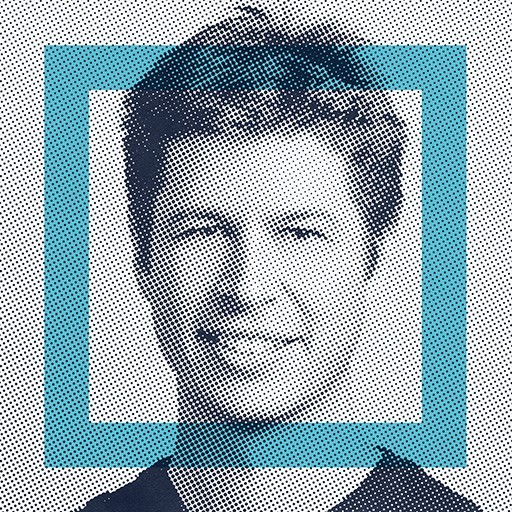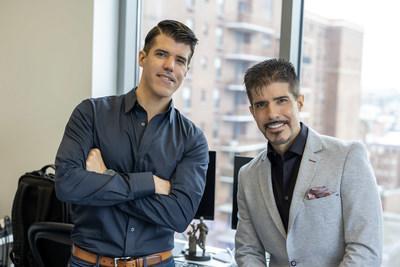Entrepreneur Case Studies
Building a High-Growth Startup From Brazil: Revelo CEO Lachlan de Crespigny (Part 1)

Lachlan has built a wonderful company from Brazil that has emerged as a pandemic beneficiary.
Read on for the nuances of his journey.
Sramana Mitra: Let’s start at the very beginning of your journey. Where are you from? Where were you born, raised and in what kind of background?
>>>Twin Brothers Building a FinTech Venture: Stephen Roche and Gabino Roche, CoFounders of Saphyre (Part 7)
Sramana Mitra: Would you now call yourself an exchange where there is a lot of inter-financial institution stuff happening?
Gabino Roche: I think that’s a fair analogy. It’s voluntary, because you don’t have to participate. If you do, there are a lot of carrots that come along with it. I like to call it an operating system for finance. The reason I say this is Stephen mentioned it earlier. Everyone had their own on-premise database. They would take Polaroid snapshots of the data, email them together, and then these spreadsheets will upload to our respective systems.
>>>Twin Brothers Building a FinTech Venture: Stephen Roche and Gabino Roche, CoFounders of Saphyre (Part 6)
Sramana Mitra: The workflow that you are facilitating is in the KYC AML in the context of trading.
Gabino Roche: A little bit. Everyone uses the term KYC AML and they imply tax, which is not necessarily KYC AML. They imply contractual legal agreements that are negotiated. For example, when you do derivatives trading, there are legal amendments and credit risk concerns. There are your setups with trading on Bloomberg versus market access and all these FX Connect. These are on top of KYC AML.
>>>Twin Brothers Building a FinTech Venture: Stephen Roche and Gabino Roche, CoFounders of Saphyre (Part 5)
Sramana Mitra: Tell me about the customer progress from 2017 to 2022. You had five years’ worth of customer development that has happened. Tell me about who those customers were, what were the average deal sizes, and at what pace were they coming in.
Stephen Roche: The revenue didn’t start coming in till 2020. In 2020, we had close to 20 to 25 firms working with us on some form of proof of concept. A lot of times, we were just giving the service for free to give confidence. Most of the firms wanted other people to use it. JP Morgan was one of the firsts.
>>>Twin Brothers Building a FinTech Venture: Stephen Roche and Gabino Roche, CoFounders of Saphyre (Part 4)
Gabino Roche: We also got ideas. There was some nomenclature we would encounter along the way. We had to come up with intelligent ways without the client knowing what we were trying to do. They had to see words the way they understood them. We had to create a smart way of mapping that data. That is what we did, but we didn’t have a working product.
We officially started in May 2017. It wasn’t until the end of September that we had a product that we could get tested. It was not ready for production; it was just for testing. I knew I was going to run out of my brother’s money at this point.
>>>Twin Brothers Building a FinTech Venture: Stephen Roche and Gabino Roche, CoFounders of Saphyre (Part 3)
Sramana Mitra: Let’s come to the year that you started Saphyre. What year was that?
Gabino Roche: 2017. I remember it was scary. To do work in finance, you had to go all in. I told you about my three failed businesses and the one that broke even. In this case, if I’m going to do it, I have to do it full-time. There’s no financial institution that would do business with you if you’re doing a part-time gig. That’s why when Stephen said he would back me and pay for my salary for a year, I had to fully commit.
Sramana Mitra: In 2017 when you decided to do Saphyre, what were you going to do?
>>>Twin Brothers Building a FinTech Venture: Stephen Roche and Gabino Roche, CoFounders of Saphyre (Part 2)
Sramana Mitra: You learn a tremendous amount in failures. It gives you the time to pivot. There are a lot of pivots involved in finding product-market fit. Having the time to do that pivot without going bankrupt is very helpful.
Gabino Roche: Just to tie to the freedom of failure and pivoting, at the mobile app company I was running, when you come up with an idea like Saphyre and you’re trying to get clients to adopt it; you may have an initial idea that’s really good, but you have to put yourself in the selfish interest of the potential partners and clients that you want to win. You may want to build something else to get to your idea.
>>>Twin Brothers Building a FinTech Venture: Stephen Roche and Gabino Roche, CoFounders of Saphyre (Part 1)

Gabino and Stephen have built a wonderful FinTech company and tell their story with wonderful flair and candor.
Sramana Mitra: Let’s go to the very beginning of your journey. Where were you from? Where were you born, raised, and in what kind of background? You are twin brothers. I think this is my first case study of a twin-brother entrepreneur.
>>>